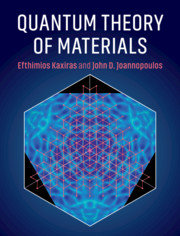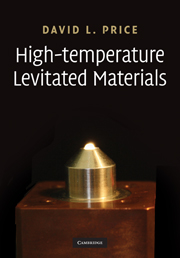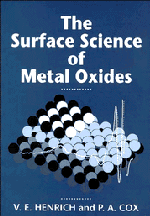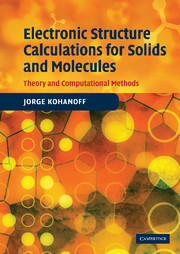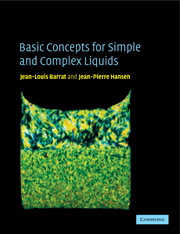Quantum Theory of Materials
This accessible new text introduces the theoretical concepts and tools essential for graduate-level courses on the physics of materials in condensed matter physics, physical chemistry, materials science and engineering, and chemical engineering. Topics covered range from fundamentals such as crystal periodicity and symmetry, and derivation of single-particle equations, to modern additions including graphene, two-dimensional solids, carbon nanotubes, topological states, and Hall physics. Advanced topics such as phonon interactions with phonons, photons and electrons, and magnetism, are presented in an accessible way, and a set of appendices reviewing crucial fundamental physics and mathematical tools makes this text suitable for students from a range of backgrounds. Students will benefit from the emphasis on translating theory into practice, with worked examples explaining experimental observations, applications illustrating how theoretical concepts can be applied to real research problems, and 242 informative full color illustrations. End-of chapter exercises are included for homework and self-study, with solutions and lecture slides for instructors available online.
- Covers a diverse range of both traditional and modern topics from crystal periodicity and symmetry, and derivation of single-particle equations, to graphene, two-dimensional solids, carbon nanotubes, topological states, and Hall physics
- The book is accessible to students from a range of backgrounds, and a comprehensive set of appendices reviews the prerequisite fundamental physics and mathematical tools
- Contains numerous worked examples which demonstrate how to explain experimental observations
Reviews & endorsements
'This book elucidates the essentials of practical electronic structure theory utilized under the hood of commonly employed electronic structure codes, revealed with a clarity and succinctness that only these authors with many decades of experience at the research forefront can provide. This masterpiece is essential reading for researchers engaged in modern materials research, including recent topics in topological constraints and two-dimensional materials.' Evan Reed, Materials Computation and Theory Group, Stanford University
'This is a wonderful book clearly explaining essential concepts of the quantum theory of materials. It should become a classic text in this field.' Marvin Cohen, University of California, Berkeley
'A must-read for aspiring scientists and engineers in the age of interdisciplinary nanoscale science and technology. Two renowned masters in materials physics have opened the depth of condensed matter physics theories to the communities of condensed matter physics, materials science, physical chemistry, and chemical engineering!' Kyeongjae Cho, University of Texas, Dallas
'Written by two leaders in the field … the book features a clear exposition of solid- state physics' fundamental theoretical principles, an excellent account of modern computational approaches and applications, and a first- rate introduction to modern topological concepts and their role in shaping the dynamics of Bloch electrons. Because of the authors' clarity, focus on basic principles, and thoughtful choice of examples, Quantum Theory of Materials serves as a top-notch introduction to solid-state physics not only for physicists but also for chemists, engineers, and materials scientists.' Roberto Car, Princeton University
Product details
April 2019Hardback
9780521117111
674 pages
253 × 197 × 35 mm
1.62kg
242 colour illus. 45 tables 125 exercises
Available
Table of Contents
- 1. From atoms to solids
- 2. Electrons in crystals: translational periodicity
- 3. Symmetries beyond translational periodicity
- 4. From many-particles to the single-particle picture
- 5. Electronic properties of crystals
- 6. Electronic excitations
- 7. Lattice vibrations and deformations
- 8. Phonon interactions
- 9. Dynamics and topological constraints
- 10. Magnetic behavior of solids
- Appendix A: mathematical tools
- Appendix B: classical electrodynamics
- Appendix C: quantum mechanics
- Appendix D: thermodynamics and statistical mechanics.

